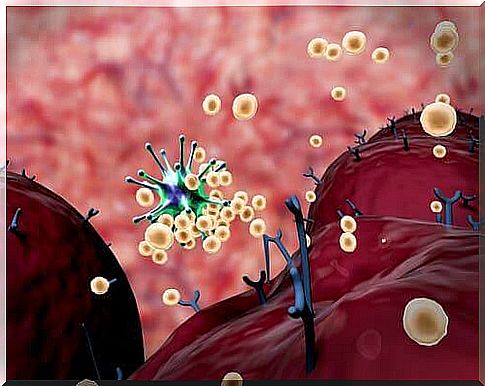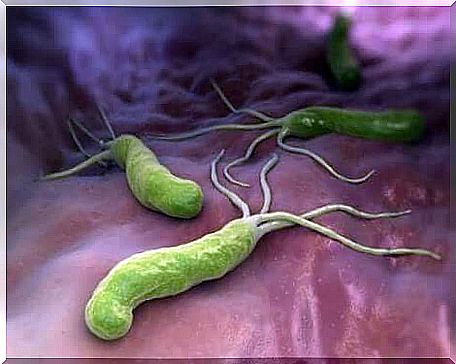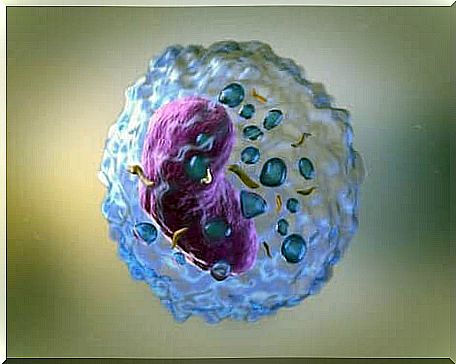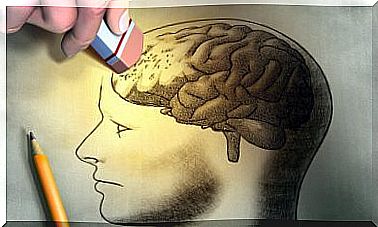The Immune Response: A Brief Overview

The immune response is an important mechanism in the human body and we use it to defend ourselves against external agents that can harm our health. It also consists of different processes and cells. Today we are going to tell you everything you need to know about it.
An overview of the immune response
The immune response is the phenomenon the body performs to recognize and eliminate external agents that it perceives as harmful. This phenomenon is based on recognizing these foreign agents, also known as antigens.
Antigens are usually found on the surface of viruses, bacteria and fungi. However, they are also found in other inert substances such as chemicals; Other different materials or toxins can also be antigens.
Humans have two different types of immunity. Today we are going to tell you about both of these.
Congenital immunity
Congenital immunity is not specific. It is present even before it comes in contact with a given antigen and as the name suggests, all humans are born with it. We can divide this type of immune response into two different mechanisms:
- Barriers can be physical, such as the skin that prevents the substance or chemical from entering the body. There are many chemical barriers present in the human body. Runny nose, tears, saliva or discharge, for example. These substances have properties that make it difficult for bacteria to survive. We can mention the pH in vaginal discharge as an example, most pathogens can not survive in there.
- Cellular mechanisms consisting of the complement system, the inflammatory mechanism and phagocytes. The basis of all three mechanisms are substances that are present in the blood and circulate continuously through the blood vessels. These systems are activated to eliminate any foreign substance that enters the body.

Specific types of immunity
This is the second type of immune response. Contrary to the innate response, we are not born with a developed specific immunity. It takes shape when the body comes in contact with various antigens. It becomes faster and more effective at eliminating pathogens.
The tissue responsible for this type of immunity is lymphatic tissue, which consists of organs such as the spleen or thymus, as well as lymphatic vessels. This tissue houses the production of lymphocytes, which are the cells responsible for performing this type of immune response.
Thus , specific parts of the antigens, called epitopes, are recognized when they enter the body. Congenital immunity is activated more quickly when one of them enters the body, but it is less effective. Similarly, the adaptive immune response is much slower, but also much more efficient.
A lymphocyte will recognize the epitope of an antigen. You may not know this, but the lymphocytes are responsible for producing antibodies, which will be responsible for eliminating the pathogen. In addition, this lymphocyte will activate more lymphocytes that will come to help the ordinary lymphocyte fight the antigen. This is the primary specific immune response.
Apart from the primary immune response, there is also a production of T cells. These T cells will cause a specific immunity when they come in contact with the same type of antigen. In fact, they are activated faster to eliminate the harmful substance. This is known as a secondary immune response.

Passive and active immunity
Active immunity is about the complex we mentioned above. The human body does this naturally when it comes in contact with an antigen. The innate immune response is activated first, then the primary immune response and finally, in case of subsequent contacts, the secondary immune response.
Similarly, specific antibodies already circulate around the body without having been in contact with antigens as a passive immunity. This can only happen on two occasions:
- In newborn babies, through the antibodies the mother transmits to the baby during pregnancy.
- In vaccinated humans since vaccines often consist of antibodies or fragments of the pathogen that trigger the production of memory cells without actually causing the disease.
The immune response is a defense system
Immunity is a natural defense system in the body, and there are many ways to take care of and maintain it. We need to freshen up our vaccines and do everything we can to keep the immune system in good health.









